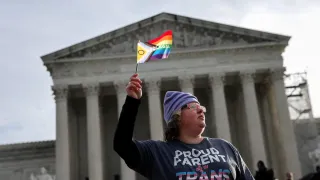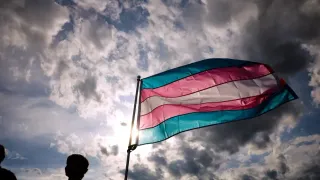
7 hours ago
'Banksying’: The Toxic Dating Trend Blindsiding Queer Partners
READ TIME: 3 MIN.
In the ever-evolving landscape of digital romance, new terminology frequently emerges to describe troubling dating behaviors. The latest addition, "banksying," has taken hold across social media and dating circles, and its impacts are being acutely felt within LGBTQ+ communities worldwide.
The term is inspired by Banksy, the anonymous British street artist known for creating provocative and unexpected works that often appear overnight. In a relationship context, "banksying" refers to the act of one partner emotionally detaching and planning a breakup well in advance, only to abruptly end the relationship without warning their unsuspecting partner. The result is often a sense of devastation for the person left behind, who may have had no inkling that anything was wrong until the moment of the breakup.
Unlike ghosting—which involves a sudden disappearance without communication—banksying is defined by a gradual, often imperceptible withdrawal. The partner initiating the breakup may spend weeks or months emotionally detaching, all while maintaining the appearance of normalcy in the relationship. When the breakup finally occurs, the initiator is often emotionally prepared, while the other partner is left shocked and deeply hurt.
Experts note that this behavior is particularly damaging because it denies the partner being left the opportunity to process the relationship’s decline or to address issues before the ending. Within LGBTQ+ relationships—where open communication is often emphasized as a counter to historic stigmatization and secrecy—the trend presents unique challenges and risks exacerbating feelings of isolation and mistrust.
The LGBTQ+ community has long advocated for transparency and directness in relationships, partly as a response to the marginalization and hidden identities many have experienced. "Banksying" undermines the trust and communication that are essential for healthy queer relationships. For transgender people, non-binary individuals, and others who face additional layers of vulnerability in dating, this trend can deepen existing wounds and fuel anxiety around intimacy and rejection.
LGBTQ+ mental health advocates warn that being blindsided by a breakup can trigger a resurgence of internalized shame or abandonment issues, especially for those who have already experienced familial or societal rejection. The trend also intersects with the reality that many LGBTQ+ people rely on chosen families and community support, making unexpected relationship terminations even more destabilizing.
While every relationship is unique, there are warning signs that may indicate someone is being "banksyed." These include a partner’s gradual withdrawal from shared activities, lessening of emotional intimacy, and vague or evasive responses to discussions about the future. Unlike more abrupt toxic behaviors such as ghosting, the subtlety of banksying can make it much harder to identify in real time.
Mental health professionals emphasize the importance of honest, proactive communication in all romantic relationships, but especially in queer partnerships. If someone feels their partner is disengaging, advocates suggest initiating open conversations about feelings and expectations, rather than waiting for a sudden ending. For those who have experienced banksying, seeking support from affirming friends, chosen family, or LGBTQ+-competent therapists can help process the event and rebuild trust.
In response to the spread of toxic dating trends like banksying, LGBTQ+ organizations and influencers are calling for renewed commitment to relationship education and mental health resources. Digital platforms and dating apps are also being urged to provide more resources on healthy communication and conflict resolution.
As the vocabulary of online dating evolves, so too does the need for empathy and respect within all relationships. For LGBTQ+ individuals, these values are not just aspirational—they are essential tools for survival and thriving in a world where love and connection can still be fraught with risk.






